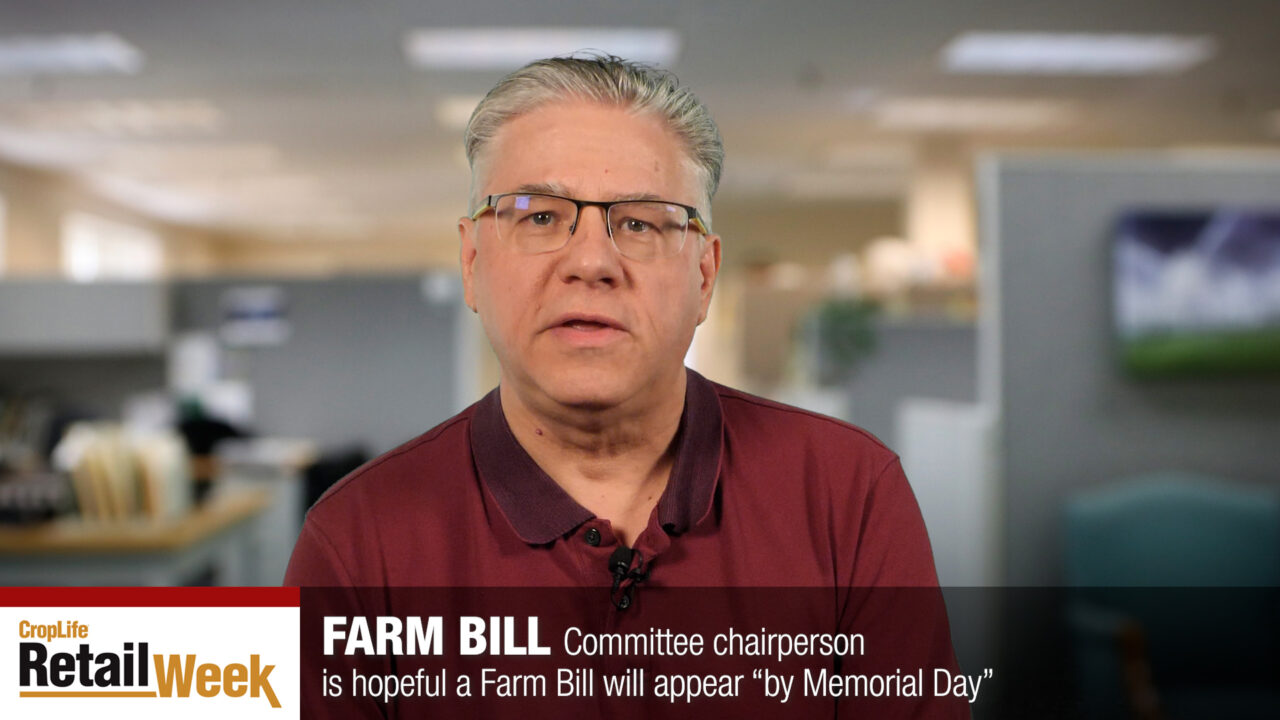Sweet Treatments
The big news in disease control as we near the end of the first decade of the 21st century is getting an early start with seed treatments. There’s a flurry of activity in this market sector, evidenced by the continuing news of pairing fungicide manufacturers and seed companies to bring new options to growers.
This is just one of the key topics that our in-house disease dude, Rusty Beane, discusses in the final installment of our annual Crop Protection Preview series.
Like Reid W. Acker and Bugsy B. Gohn the past two months, Beane brings almost two decades of crop protection industry coverage to the table. After making calls to several well-respected Extension plant pathologists, he’s got the lowdown on the fungicide market.
Dear Rusty: Are there specific diseases that we should keep an eye on this year?
Although anticipated outbreak severity may differ, for the most part the Extension experts I talked to just expect their usual pests. In the Midwest, that’d be the common foliar diseases like gray leaf spot, common rust, northern corn leaf blight in corn, Septoria brown spot, frogeye leaf spot, and late-season Cercospora/leaf blight in soybeans.
The University of Illinois‘ Carl Bradley tells me he wouldn’t be surprised if a little more common rust and southern rust than usual show up in Illinois fields in 2009.
Daren Mueller from Iowa State University says there hasn’t been a lot of widespread foliar diseases on corn lately in his state, including last year. The early rain forced a lot of replanting, yet the season turned out to be drier and cooler than normal, knocking the disease and humidity cycles out of sync. When a disease showed up, there was no high humidity to feed it — bad for diseases, great for yields.
The story’s a little different in the South, which typically has more crop diseases than the northern or central tier of states because of its humidity, rain, and heat. Getti ng the corn crop planted by mid-April helps growers “outrun” diseases like southern rust, says the University of Arkansas‘ Scott Monfort. Other corn diseases include northern corn l eaf blight and gray leaf spot in minimum-till areas.
He adds that fungicides play a big role in southern rust control in fields planted after April 15, but the ever-increasing corn acreage means some fields are planted well into May and more at risk for late outbreaks like last year’s crop.
Soybean rust, frogeye leaf spot, late-season Cercospera leaf blight, and aerial blight are concerns in Southern soybeans; the latter is a particular concern for rice/soybean rotations.
Dear Rusty: What’s new this year?
The pair of products listed in the “2009 New Fungicides” chart aren’t brand new, but Proline 480 SC from Bayer CropScience is new to the soybean market since last year’s report, and Orius 3.6F from Makhteshim Agan of North America (MANA) is new to the corn markets.
Proline 480 SC, which was included in my mid-year report in September can be tank-mixed with Stratego.
Orius 3.6F is now approved for use in corn and received a Section 3 for soybeans. It is used as a protective spray or when weather conditions are favorable for development of rust, northern leaf blight, southern leaf blight, northern leaf spot, and gray leaf spot in corn, and soybean rust and powdery mildew in soybeans.
Several soybean rust products have been upgraded from Section 18 to full Section 3 status by EPA. The last two products waiting for Section 3 approval — Punch from DuPont Crop Protection and Topguard from Cheminova Inc. — are expected this year.
However, it’s the new fungicide-based seed treatments that really intrigue me. (Bugsy B. Gohn also discussed several seed treatments containing insecticides in “Readying For War,” January CropLife magazine.)
For example, there’s Acceleron brand seed treatment from Monsanto. The key here is to recognize that the word “brand” signals that this is a whole lineup of products under the Acceleron umbrella. According to the company, the brand will complement the company’s seed and trait strategy.
The Acceleron seed treatment platform will provide proprietary mixes of products created to optimize plant health in soybeans, corn, and cotton. The first seed treatment technology will be introduced on Roundup Ready 2 Yield soybeans this year.
Janice Person, Monsanto spokesperson, emphasizes that the active ingredients will be crop-specific and may change from one year to another.
Another product is Avicta seed treatment from Syngenta Crop Protection, which received EPA approval last month. This one targets nematodes in corn, where the traditional cotton/soybean pest is becoming a growing problem. It will be available as a pre-applied treatment package with a 0.50 milligram active ingredient rate of products you already know: Cruiser 500 insecticide and Apron XL, Maxim XL, and Dynasty fungicides.
Most of you will have to be patient for another year since it’ll only be available in limited amounts this spring for field trials. Syngenta expects Avicta will be available for the 2010 growing season.
Dear Rusty: Can we relax on soybean rust now? After all, there hasn’t been a major outbreak since it appeared in the U.S. in late 2004.
If — and maybe I should say “when” — an outbreak of soybean rust happens in this country, most experts say it will be devastating. You don’t have to worry about it 24/7, but checking USDA’s soybean rust Web site periodically to keep tabs on the disease is advised. Tom Allen of Mississippi State University, who has the perspective of someone who sees soybean rust in his state every season, says retailers and growers should NOT get complacent about rust, as it has the potential to be an explosive disease. Actually, every plant pathologist I talked to couldn’t stress enough the importance of staying aware of where rust is in relation to your operation and being prepared to work with your growers in preventive and control measures.
Movement of the disease in 2009 will depend on overwintering of the inoculum in the South, prolonged temperatures across the southern U.S. throughout the winter and into the spring, and potential tropical weather systems. A major freeze in January went quite deep into the South, although at presstime, we don’t know how much inoculum has been destroyed.
Bradley of Illinois notes the U.S. is still at the beginning stages of dealing with this pathogen and as research and experience continue, even 10 years from now, our knowledge of soybean rust will be far greater.
Dear Rusty: It looks like preventive/scheduled applications of fungicides are ruling the day. Many of my grower-customers have made it pretty clear that they plan to use Headline on corn and/or soybeans, so BASF is getting their message across. Any comments?
I haven’t seen the acreage numbers or yield results for 2008, although some of the Extension guys tell me they think the acreage has plateaued at this point. BASF had the numbers to back its claims about Headline in 2007, estimating that U.S. corn and soybean growers who used the fungicide that year produced an additional $450 million worth of grain.
At the National Agricultural Aviation Association‘s recent national conference, BASF shared early results from its continued evaluation of Headline fungicide applications as low as 1 gallon per acre (gpa). Company officials reported that this low use rate provided yield and performance that was equal to that gained when using Headline at 2 gpa. Please remember, though, that using Headline at less than 2 gpa water volumes is not registered by EPA. In other words, don’t try this at home, folks.
Bayer CropScience’s Stratego and Syngenta’s Quilt also are being marketed for preventive applications, according to Don Hershman of the University of Kentucky.
Hershman is one of many Extension plant pathologists that still aren’t convinced if these preventive programs are more effective than using the fungicide when disease is present and warrants treatment. He also cites resistance and environmental impact concerns.
Despite his concerns, growers are unmoved. He told me that prior to a wheat producers meeting, his pre-talk survey showed that 60% of those present were planning to make scheduled fungicide applications. After his presentation, the post-survey showed he did not change their minds. The two sides are at an impasse for now, he says.
Dear Rusty: What’s in the pipeline?
Monsanto and Bayer CropScience will pair up Bayer’s Vortex corn fungicide and Monsanto’s eight-trait stacked seed, SmartStax, which is expected to launch in 2010. It will combine Trilex, YieldShield, and Allegiance seed applied fungicides, Gaucho seed-applied insecticide, Celgard, and Pro-Ized Red Colorant into one product.
The Vortex-based seed treatment will provide corn growers with significant improvement in early-season protection against seedling diseases and insects.
Monsanto will have exclusive rights to commercialize the new fungicide seed treatment in its seed product.





